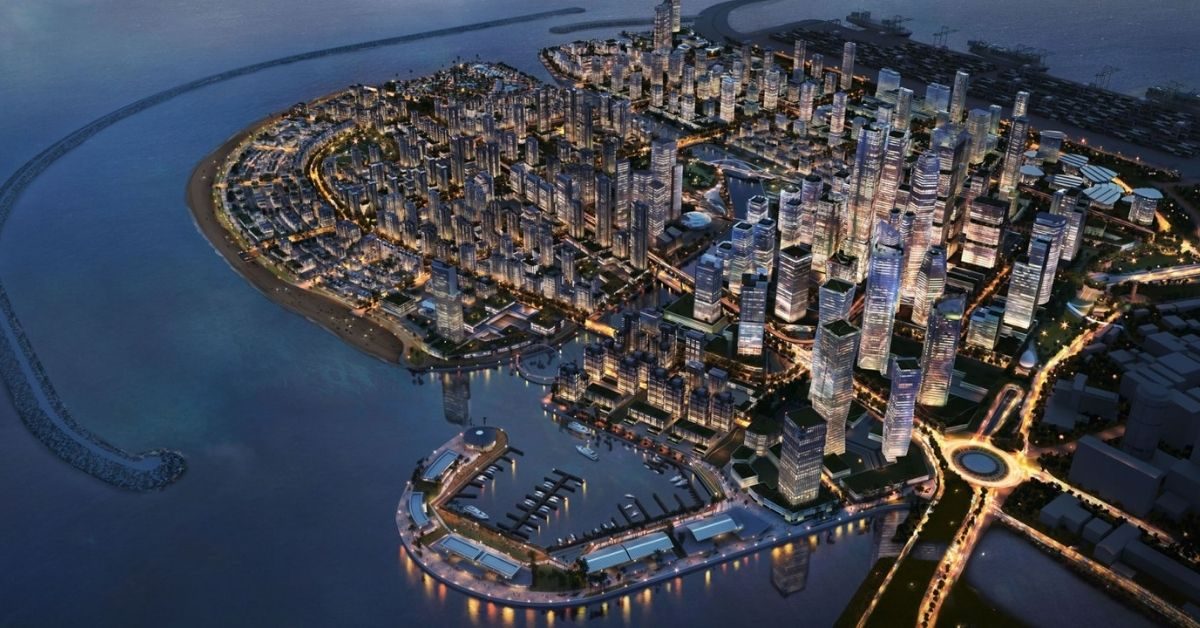Recently the Sri Lankan parliament passed the Colombo Port City Economic Commission Bill, creating a city-based special economic zone.
The 269-hectare Chinese-funded port city is being developed adjoining Colombo Port on a reclaimed land from the Indian Ocean.
Port City – as it is now being known – is expected to have designated residential, commercial and entertainment areas including a marina. It is also expected to bridge the absence of an offshore financial center (OFC) in South Asia – between Dubai and Singapore. Many analysts say the port city will be a game-changer for the US$ 84 billion economy, while some argue the project is a potential threat to Sri Lanka’s sovereignty.
Intense marketing is seen by the (Chinese) project company to sell land plots in the zone where legal currency is expected to be an international currency (most likely US Dollar).
Port City special economic zone is proposed to be administered by an independent commission appointed by the Sri Lankan president, yet with the oversight of other relevant local regulatory bodies such as the Central Bank of Sri Lanka.
However, attracting investors to Port City is not going to be easy post-Covid 19. Despite Colombo’s good ranking as an unpolluted city with good quality air – compared to many large cities in the region – demand for commercial space in city centers, high density living, and for mega-size hotels are seen going south, at least for now.
But on the other hand, Port City as an OFC has potential. Even the Covid 19 pandemic could not slow down the growth rate of the globe’s billionaires and their wealth. Naturally, the demand for services offered by OFCs is on the increase, especially from the new billionaires emerging from developing countries, mostly from China.
OFC prospects
There are a large number of OFCs around the world including many small island states. Interestingly, five out of eight major OFCs listed by the International Monetary Fund are linked to Sri Lanka’s colonial rulers.
These five are Cayman Islands, British Virgin Islands, and Bermuda which are continuing as British Overseas Territories, Singapore, an independent commonwealth state like Sri Lanka, and the Netherlands. Singapore and Netherlands are major conduit OFCs while the other three are major sink OFCs – where real wealth creation or preservation activities happen!
With a long history as a trading nation (since long before European colonization), mature corporate culture alongside an educated workforce, Sri Lanka has a good prospect to join the OFC club. In fact, the island nation has a better chance as a conduit OFC like Singapore.
Despite the strong Chinese connection, and link to China’s Belt and Road initiative – it is very likely that Port City’s OFC will develop stronger commercial linkages with other OFCs – especially those associated with Sri Lanka’s colonial past due to the nation having many shared corporate cultures and practices with these countries.
Gaming and entertainment
Perhaps the real attractiveness of the Port City is going to be gaming and related entertainment activities. Besides Port City is most likely to be a US dollar zone and the gaming will possibly also be in US dollars. This is a unique situation unlike other regional gaming centers like Macau or Singapore.
Anyway, it will be a few years from now that Port City could welcome high rollers. The immediate challenge for Sri Lanka and the project developers appear to be luring investors for land plots in the Port City – which will indirectly help the Sri Lankan government improve the deteriorating balance of payment and support the dwindling state revenue. After all, Port City project itself is looking more like a calculated gamble in a country where gambling/ betting are frowned upon publicly, but practiced commonly. (This article was originally published on South Asia Monitor)
Source : Daily Mirror







